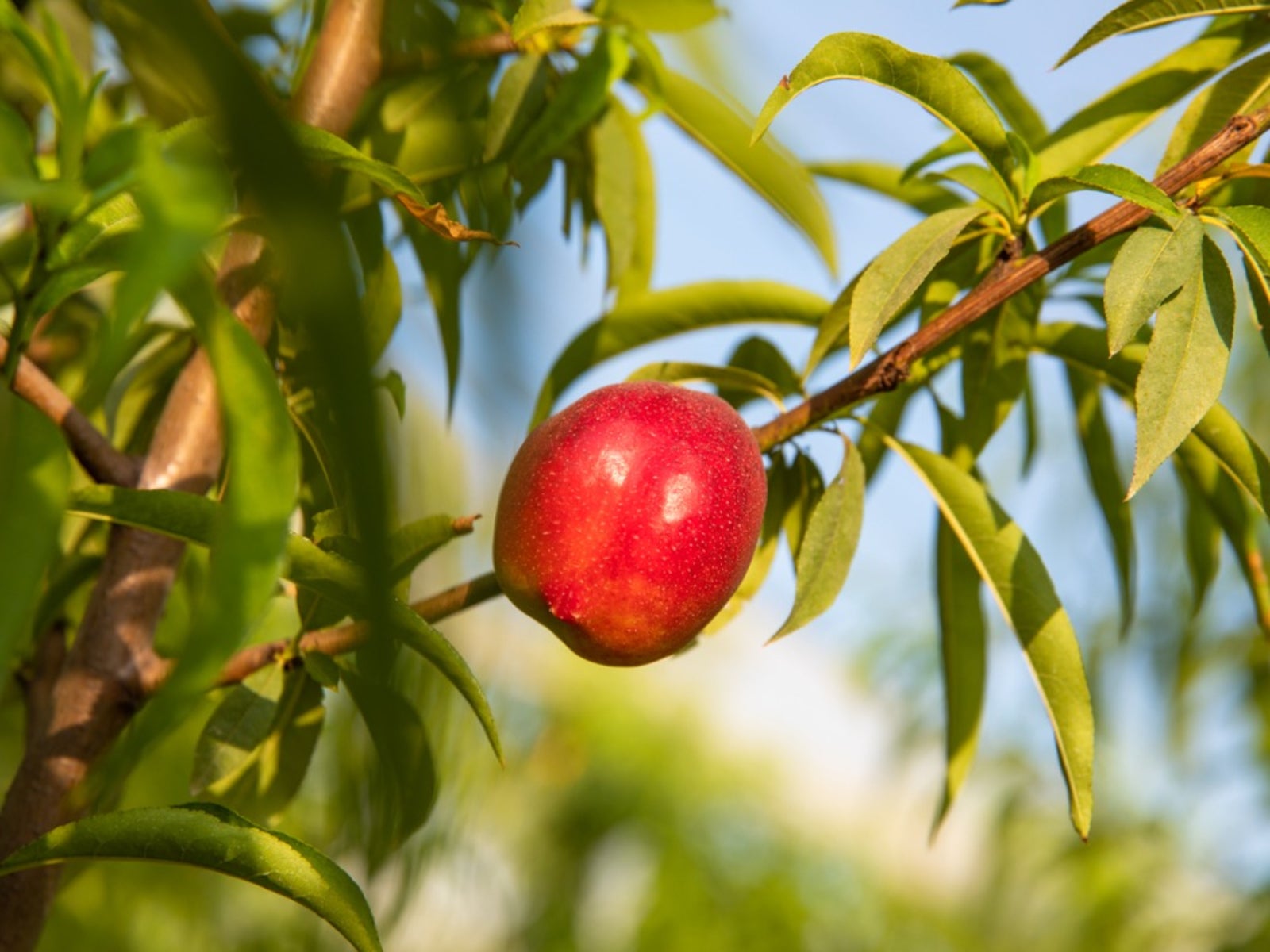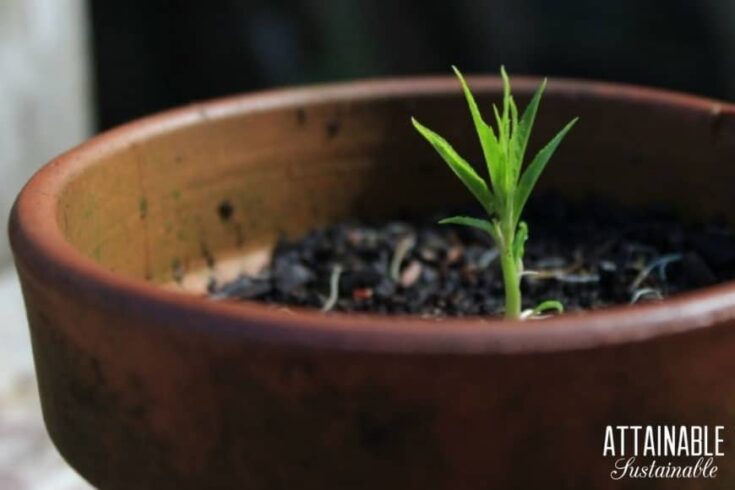Why Growing a Nectarine Tree from a Pit is a Rewarding Experience
Growing a nectarine tree from a pit can be a fun and rewarding experience for gardeners of all skill levels. Not only does it provide an opportunity to nurture a tree from a small seed to a fruit-bearing plant, but it also offers a sense of accomplishment and pride. With the right techniques and care, a nectarine tree grown from a pit can produce delicious and juicy fruit for years to come.
One of the main benefits of growing a nectarine tree from a pit is the freshness and flavor of the fruit. Homegrown nectarines are often sweeter and more flavorful than store-bought varieties, and they can be enjoyed right from the tree. Additionally, growing a nectarine tree from a pit can be a cost-effective way to enjoy this delicious fruit, as it eliminates the need to purchase trees or fruit from a nursery or grocery store.
Furthermore, growing a nectarine tree from a pit can be a great way to learn about the process of tree growth and development. By starting with a small seed and nurturing it into a mature tree, gardeners can gain a deeper understanding of the needs and requirements of nectarine trees. This knowledge can be applied to other gardening projects and can help to improve overall gardening skills.
For those interested in learning how to grow nectarine from pit, the process is relatively straightforward. With the right techniques and care, a nectarine tree can be grown from a pit in a matter of months. By following the steps outlined in this article, gardeners can successfully grow a nectarine tree from a pit and enjoy the many rewards that come with it.
Understanding the Basics of Nectarine Tree Growth
Before attempting to grow a nectarine tree from a pit, it’s essential to understand the basic requirements for nectarine tree growth. Nectarine trees prefer a warm and sunny climate, with average temperatures ranging from 65°F to 75°F (18°C to 24°C). They also require well-draining soil with a pH between 6.0 and 7.0.
In terms of sunlight, nectarine trees need full sun to produce fruit, so choose a location that receives at least 6 hours of direct sunlight per day. Watering needs vary depending on the climate and soil type, but as a general rule, nectarine trees require about 1 inch of water per week. It’s also crucial to choose a suitable variety of nectarine tree, as some are more adapted to certain climates and soil types.
Understanding the growth habits of nectarine trees is also vital for successful growth. Nectarine trees can grow up to 15 feet tall, so provide enough space for the tree to mature. They also require regular pruning to maintain shape and promote fruiting. By understanding these basic requirements, gardeners can provide the optimal conditions for their nectarine tree to thrive.
When learning how to grow nectarine from pit, it’s also important to consider the specific needs of the tree at different stages of growth. For example, young nectarine trees require more frequent watering and fertilization than mature trees. By understanding these needs, gardeners can provide the necessary care and attention to help their nectarine tree grow and flourish.
Preparing the Pit for Planting
Preparing the nectarine pit for planting is a crucial step in the process of growing a nectarine tree from a pit. The pit must be cleaned, dried, and stratified to increase the chances of successful germination. Start by washing the pit in warm water to remove any remaining fruit or debris. Then, use a soft brush to gently scrub the pit and remove any remaining pulp or fibers.
Next, dry the pit thoroughly with a paper towel to prevent mold or rot from developing. Once the pit is dry, it’s time to stratify it. Stratification involves simulating the natural winter chill that nectarine pits would experience in the wild. This can be done by placing the pit in a plastic bag or airtight container with some moist peat moss or vermiculite. Store the bag or container in the refrigerator at a temperature of around 40°F (4°C) for 3-4 months.
After stratification, the pit is ready to be planted. It’s essential to note that not all nectarine pits will germinate, even with proper preparation. However, by following these steps, you can increase the chances of successful germination and give your nectarine tree the best possible start in life. When learning how to grow nectarine from pit, it’s also important to be patient and not get discouraged if the pit doesn’t germinate right away.
Proper preparation of the pit is critical for successful germination. By cleaning, drying, and stratifying the pit, you can help to break down the seed coat and encourage the seed to sprout. This process can take several months, so it’s essential to be patient and not rush the process. With proper care and attention, your nectarine pit can germinate and grow into a healthy and productive tree.
Planting the Pit and Providing Optimal Conditions
Once the nectarine pit has been properly prepared, it’s time to plant it. Choose a container that is at least 6-8 inches deep and has drainage holes to prevent waterlogged soil. Fill the container with a well-draining seed starting mix, and plant the pit about 1-2 inches deep. Cover the pit with a thin layer of soil, and gently firm the soil to secure the pit in place.
Provide optimal conditions for germination by placing the container in a warm and sunny location, such as a south-facing windowsill or under grow lights. Maintain a consistent temperature of around 70-80°F (21-27°C) during the day and around 60-70°F (15-21°C) at night. Water the soil gently but thoroughly, and keep the soil consistently moist but not waterlogged.
It’s also essential to provide adequate light for germination and seedling growth. Nectarine seeds require a minimum of 12 hours of light per day to germinate, so consider using grow lights if you don’t have a sunny windowsill. Keep the lights about 6-8 inches above the soil surface, and adjust the height as the seedling grows.
When learning how to grow nectarine from pit, it’s crucial to be patient and not rush the process. Germination can take anywhere from 1-3 months, depending on the variety and conditions. Keep the soil consistently moist, and provide optimal light and temperature conditions to encourage germination and seedling growth.
By following these steps and providing optimal conditions, you can increase the chances of successful germination and give your nectarine tree the best possible start in life. Remember to monitor the seedling’s progress and address any potential issues promptly to ensure healthy and vigorous growth.
Nurturing the Seedling: Tips for Successful Growth
Once the nectarine seedling has germinated, it’s essential to provide the right care to ensure successful growth. Fertilization is crucial for promoting healthy growth and development. Use a balanced fertilizer that is specifically formulated for fruit trees, and follow the instructions on the label for application rates and timing.
Pruning is another critical aspect of nurturing the seedling. Prune the seedling regularly to maintain a strong and healthy structure, and to promote fruiting. Remove any weak or damaged branches, and shape the tree to encourage a central leader and a balanced canopy.
Pest management is also essential for protecting the seedling from pests and diseases. Keep an eye out for common pests such as aphids, whiteflies, and spider mites, and use organic or integrated pest management (IPM) methods to control infestations. Regularly inspect the seedling for signs of disease, and take action promptly if you notice any symptoms.
Monitoring the seedling’s progress is vital for identifying any potential issues early on. Check the seedling regularly for signs of stress, disease, or pests, and take action promptly if you notice any problems. Keep a record of the seedling’s growth and development, and adjust your care routine as needed to ensure optimal growth.
When learning how to grow nectarine from pit, it’s essential to be patient and not rush the process. Seedlings take time to develop, and it’s crucial to provide the right care and attention to ensure successful growth. By following these tips and providing the right care, you can help your nectarine seedling grow into a strong and healthy tree that produces delicious fruit for years to come.
Common Challenges and Solutions for Growing Nectarine Trees from Pits
When growing a nectarine tree from a pit, several challenges may arise. One common issue is poor germination, which can be caused by a variety of factors such as inadequate stratification, insufficient moisture, or poor soil quality. To overcome this challenge, ensure that the pit is properly stratified and planted in well-draining soil with adequate moisture.
Disease is another common challenge that can affect nectarine trees grown from pits. Fungal diseases such as powdery mildew and brown rot can be particularly problematic. To prevent disease, ensure that the tree is planted in a location with good air circulation and that the soil is well-draining. Regularly inspect the tree for signs of disease and take action promptly if you notice any symptoms.
Pests can also be a challenge when growing nectarine trees from pits. Common pests such as aphids, whiteflies, and spider mites can cause damage to the tree and reduce fruit production. To control pests, use organic or integrated pest management (IPM) methods such as introducing beneficial insects, using physical barriers, or applying insecticidal soap.
Another challenge that may arise is poor fruit set or fruit drop. This can be caused by a variety of factors such as inadequate pollination, insufficient moisture, or poor soil quality. To overcome this challenge, ensure that the tree is planted in a location with adequate pollinators and that the soil is well-draining and fertile.
By being aware of these common challenges and taking steps to prevent or overcome them, you can increase the chances of success when growing a nectarine tree from a pit. With proper care and attention, your nectarine tree can thrive and produce delicious fruit for years to come.
Enjoying the Fruits of Your Labor: Harvesting and Enjoying Your Homegrown Nectarines
After months of nurturing and care, the moment of truth finally arrives – harvesting your homegrown nectarines There’s nothing quite like biting into a juicy, sweet nectarine that you’ve grown yourself. But before you can enjoy the fruits of your labor, you need to know when to harvest them.
Nectarines are typically ready to harvest in mid to late summer, around 3-4 months after flowering. To determine if your nectarines are ripe, gently tug on the fruit. If it comes off the tree easily, it’s ready to eat. You can also check for ripeness by looking for a sweet, fruity aroma and a slight softening of the skin.
Once you’ve harvested your nectarines, handle them with care to avoid bruising or damaging the fruit. Store them in a cool, dry place or refrigerate them to keep them fresh for longer. Nectarines are a delicious and versatile fruit that can be enjoyed in a variety of ways – eat them fresh, use them in salads, or bake them into pies and tarts.
Sharing your homegrown nectarines with family and friends is a great way to enjoy the fruits of your labor and show off your gardening skills. Consider hosting a summer BBQ or dinner party and featuring your fresh nectarines as the star of the show. Your guests are sure to be impressed by the sweet, juicy flavor and the fact that you grew them yourself.
When learning how to grow nectarine from pit, it’s essential to remember that the journey is just as important as the destination. Enjoy the process of nurturing your tree, and don’t be discouraged if things don’t go exactly as planned. With patience, care, and attention, you’ll be enjoying your homegrown nectarines in no time.
Conclusion: Growing a Nectarine Tree from a Pit is a Fun and Rewarding Experience
Growing a nectarine tree from a pit is a fun and rewarding experience that can bring joy and satisfaction to gardeners of all skill levels. With the right techniques and care, a nectarine tree can thrive and produce delicious fruit for years to come. By following the steps outlined in this article, readers can learn how to grow nectarine from pit and enjoy the many benefits of homegrown fruit.
From the initial preparation of the pit to the harvesting of the fruit, growing a nectarine tree from a pit requires patience, care, and attention. However, the sense of accomplishment and pride that comes with nurturing a tree from a small seed to a fruit-bearing plant is well worth the effort.
Whether you’re a seasoned gardener or just starting out, growing a nectarine tree from a pit is a great way to get involved in gardening and enjoy the many rewards that come with it. So why not give it a try? With a little bit of effort and patience, you can be enjoying fresh, juicy nectarines from your very own tree in no time.
Remember, growing a nectarine tree from a pit is a process that requires time, effort, and dedication. But with the right techniques and care, the rewards are well worth it. So don’t be discouraged if things don’t go exactly as planned – with persistence and patience, you can overcome any challenges and enjoy the many benefits of growing a nectarine tree from a pit.









